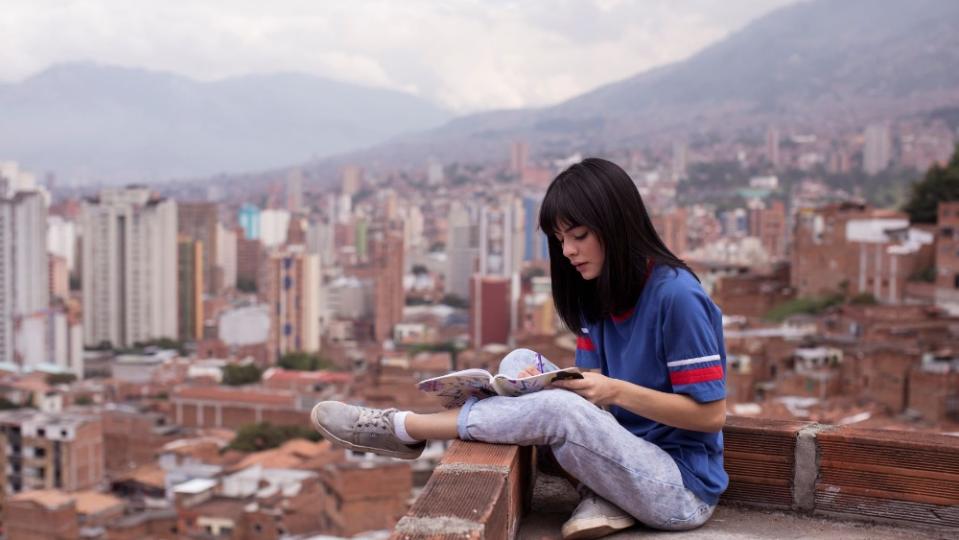Netflix LatAm Originals Boss Roberto Stopello and ‘Who Killed Sara’ Creator Chascas Valenzuela Set a Course for Netflix Novelas

Netflix’s ties with Latin America and the region’s much-loved telenovela format go back to the company’s first steps in original production outside of the U.S., when the streamer picked, as its first international original, Gary “Gaz” Alazraki’s “Club of Crows,” a soccer-themed soapy drama about a dynastic sports ownership family.
Since then, there have been several further incursions into the world of the novela, including some of the streamer’s most popular ever series such as “Who Killed Sara,” currently filming its third and final season, and “Café con Aroma de Mujer,” “Rebelde” and “The Queen of Flow,” the top three non-English language series on Netflix globally at the time of this article’s publishing, sure to be joined by the second season of “Dark Desire” when it launches on Feb. 2.
More from Variety
Tyler Perry's 'A Madea Homecoming' to Debut on Netflix in February
Netflix Introduces Emerging Filmmaker Initiative (EXCLUSIVE)

Credit: Netflix
“Who Killed Sara” creator and showrunner José Ignacio “Chascas” Valenzuela’s next project “Donde Hubo Fuego” (“Where There Was Fire”) will consist of 40 episodes in four seasons and honor the fire fighters who risk their lives on a regular basis. Set in a fire station, it will feature interwoven storylines of adventure, romance and suspense. Aside from the inherent melodrama of a story set in a fire station, Valenzuela wants to explore the dynamics in a fire station with only one female firefighter.
Netflix met with Variety earlier this month to outline plans for the company’s new Netflix novela genre. Roberto Stopello, Netflix’s director of Latin American originals and a long-time writer of classic novelas such as “La Reina del Sur,” “Los Herederos del Monte” and “Secret Lies,” and Valenzuela, himself a legendary telenovela writer behind Netflix’s global hit “Who Killed Sara” and classics such as “La Casa al Lado” and “Santa Diabla,” and who recently inked a three-year exclusive creative partnership for series and a first look film pact with Netflix, opened up about their ambitious plans for the future of the genre on the platform, writing and producing novelas in the era of streaming, and defined what makes a Netflix Novela.
To start with, can you talk a bit about what makes a Netflix novela, and how it might be different from traditional telenovelas from the past?
Stopello: We discussed it internally. This is what we call the Netflix Novela, as in the cases of “Who Killed Sara,” “Dark Desire,” “Madre Solo Hay Dos.” We take the best of the world of novelas, the melodramas that Latin Americans love, but with a much faster pacing where the stories develop greater depth. It is important to us that we restore the dignity and production level to the novela and bring in stars that people love and will recognize, while combining them with new actors and new energy. We believe that with a smaller number of episodes, we’re putting the control back in the hands of the creators. What we do is almost a tribute to the golden age of the novels in the ‘80s, when the authors, the creators, were captains of their own ships and the ones who did the casting, the writing and worked on the wardrobe and the sets. Nobody knows more about a story than the person who invented it, and nobody can address a story better than the one who created it.
Valenzuela: It makes all the difference because when they tell you that you have to tell your story in 120 episodes, you know that you are going to have to include some filler and transition episodes and that you are going to need at least 25 characters to be able to fill those 120 hours. But when they tell you to decide how many episodes you need, they are giving you permission to remove all that fluff and focus on the heart of the story. And that allows you to tell stories with five or six characters at a much faster pace and to just focus on what the story asks of you.
And what does that format change offer to viewers?
Stopello: I think that the streaming platforms have changed the way we see these stories. You no longer have to be in front of the TV every night at seven or in the afternoon for the daytime novelas. Now you can see it when it works for you. But one thing that hasn’t changed at all is the love our audiences have for these stories, and that will continue to grow. For years people have tried telling me the novela is dying, but it’s more alive now than ever! It’s mutating and it has a strength that makes it adaptable to new eras, different times and trends.
Valenzuela: The soul of the soap opera is addiction. When you write a telenovela for broadcast television, you have to be clever enough to end episodes with cliffhangers that compels people to suspend their lives 24 hours later again, stop whatever they’re doing, rush home early, or whatever it takes to be in front of the TV at the appointed time. If that’s not convening power, I don’t know what is. So, streaming allows us to binge watch, it feeds our addiction. Being able to continue watching one episode after another is, I think, part of the soul of the telenovela.
Roberto, is there a mandate in your office for how many novelas you’d like to be putting out each year?
We don’t have any type of quota, no. We don’t talk as much about figures as we do about quality, because we want all of our originals to offer something unique and to be well made. We believe if we do that, people will watch our shows.
And lastly, Chascas, How is the final season of “Who Killed Sara” progressing? What can we look forward to with this finale?
Valenzuela: I am absolutely thrilled to be back with my ‘hands in the dough,’ and what makes me absolutely happy is the incorporation of French actor Jean Reno, who comes to wrap this story with a flourish. Having an important, appealing figure like him in the series is super important to the plot. And it was completely unexpected. Never in my wildest fantasies did I dream of working with someone like him. And now that I’m starting to see the edited episodes, I can’t explain how it feels.

Credit: Netflix
Best of Variety
Sign up for Variety’s Newsletter. For the latest news, follow us on Facebook, Twitter, and Instagram.

